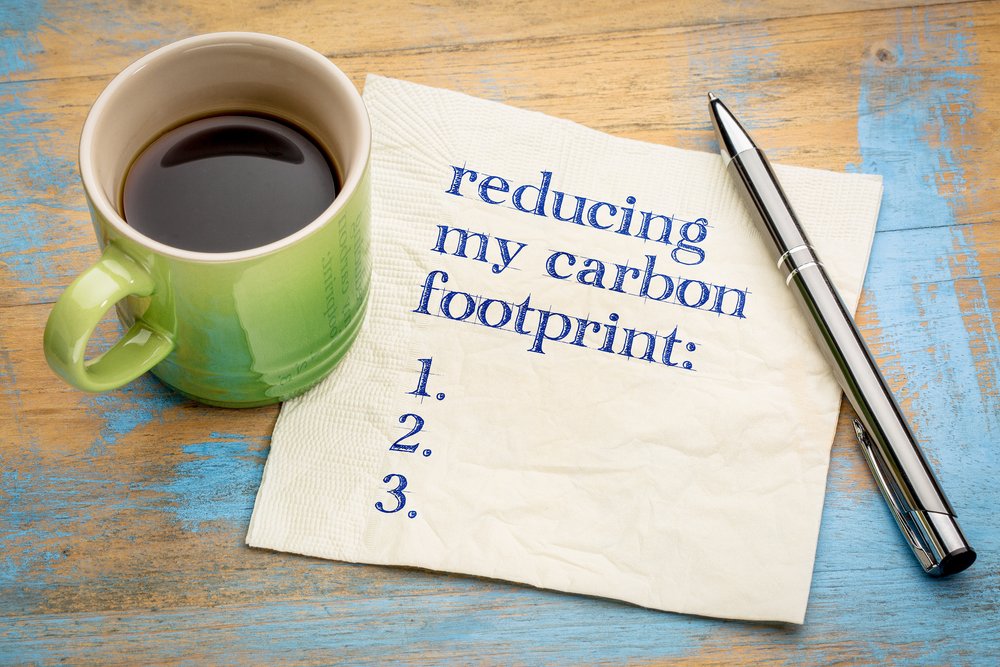Carbon footprint reduction is a topic that needs to be talked about more often. The current global average carbon footprint for a person is around 4 tons with major contributors such as food consumption, transportation, and household energy. Now, our current concentration of carbon dioxide is highest in the last two decades. While it may seem like an overwhelming task which requires so much effort, it’s really not that complicated.
Here’s the thing: If every one of us did our part, we can make a big difference. In fact, if done in small doable steps, there’s a huge return. The following are ways you can be more sustainable and improve your carbon footprint in 2021.
Reduce your water usage
Improve water efficiency in your home by upgrading to energy-efficient tools and equipment in your home. Repair leaky pipes and check plumbings as often as you can. You can also start adopting habits that can help reduce water consumption. Instead of always taking long showers, try to conserve water by showering faster. Another way to reduce your water usage is by collecting rainwater. You can use this to clean cars, windows, or water your plants.
Buy only energy-efficient appliances
This includes refrigerators, dishwashers, water heaters, and all appliances that take up your energy bill. If you have old appliances (10-20 years old), try to replace them with new and more energy-efficient ones.
For example, an old fridge costs you $43 more in energy cost compared to energy-efficient modern refrigerators. LED bulbs also reduce your carbon footprint to 70 percent so make sure you replace your regular light bulbs at home.
Another habit that can contribute to your overall carbon footprint reduction is turning things off at the power source. This helps reduce stand-by power consumption because many devices still suck energy even when they’re not in use. If you want to go for the best solution, install smart plugs which can be turned on and off through a remote control.
Draught-proofing your home
Another way to save energy is by draught-proofing your home. Since windows and doors are the biggest source of draughts, it’s important to always check them for any gaps. Draught proofing can save you energy, money, plus make your home cozy and warm.
Shop responsibly and sustainably
When shopping, always use a reusable bag to put your groceries. If you can hold the item by hand, always skip the packaging. Did you know that on average food travels 2,000 kilometers from the source to point-of-sale? Try to always shop from your locally-sourced groceries. This will reduce the distance food is shipped and will cut emissions related to transportation. Sourcing food locally also means you’re supporting local farmers.
Most of the things you consume have an indirect effect on our climate. This includes your groceries, home goods, and furniture, so taking extra steps to make sure they’re made sustainably is important. Do not buy products that are low-quality which will prompt you to buy several times in a year. Buy only quality products that last for years.
Choose green suppliers
When choosing a company to partner and become your supplier, always opt for green ones. By supporting green suppliers, you can help encourage sustainable production. This is a huge way to reduce your carbon footprint.
Travel less
The bulk of carbon emission comes from transportation. So this year, strive to travel less. The pandemic has already showed us how travelling less can help reduce carbon footprint. For example, last year because of the pandemic, road travel became 19% lower and air travel 68% lower. This resulted in a decline in NO2 and CO2 emissions and we need to keep this trend going.
If commuting is part of your everyday life because of work, you can make some impactful changes. Start by driving efficiently and going easy on breaks and gas. Also, limit the use of air conditioning when you use the car. If it’s possible to carpool, do it. This splits car emissions and reduces traffic in congested areas.
Deciding to go completely car free is a great way to also reduce your carbon footprint. In fact, if you regularly drive and then switch to a car-free lifestyle, you’ll save 2.4 tonnes of C02 per year.
Drive an electric vehicle
To lower your car emissions, invest in an electric vehicle. Compared to diesel or petrol cars, electric vehicles emit far lower emissions. In a time where fossil fuel is fast becoming obsolete, the use of electricity to drive your car is a great way to save resources.
Final Thoughts
You don’t have to wear a cape and save lives to feel like a superhero. Just using your individual power to stop climate change and boost your carbon footprint reduction can already make a real difference.










